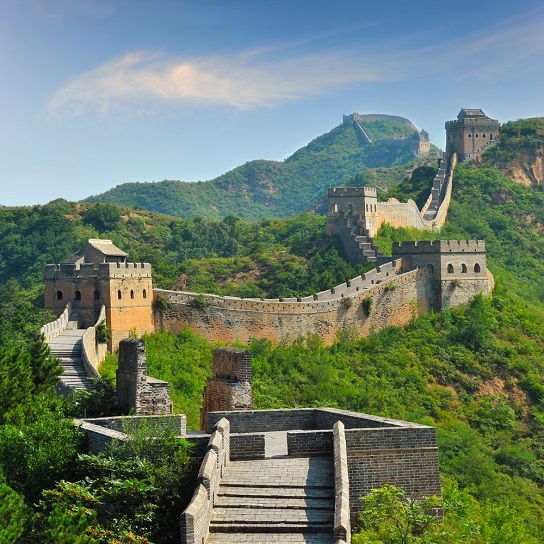In the first quarter of 2024, China’s economic growth was stronger than expected and was largely driven by the export-oriented manufacturing sector. Against a backdrop of sluggish domestic demand and strategic rivalries, particularly with the United States, Beijing is further developing its industrial policy to support economic growth and strengthen “national security”. Priority is given to the high-tech and energy transition sectors. With considerable support from the government, these sectors are moving up the value chain, increasing their production capacity, lowering selling prices and gaining export market shares. The flood of green tech products is expected to lead to further trade confrontations in the coming months.
Focus on “new productive forces”
At the annual session of the National People’s Congress held at the beginning of March, the Chinese authorities set out the main objectives of their economic strategy for 2024. In particular, to achieve the relatively ambitious growth target of “around 5%“for this year and stimulate supply, priority is being given to the “new productive forces” that are the new technology industries – ranging from artificial intelligence to the energy transition sectors (renewable energies, electric vehicles, lithium batteries).
China’s industrial policy therefore continues to focus on production and innovation across the entire value chain of the targeted manufacturing sectors. It aims to support a continuous rise in the value chain in order to boost productivity gains and make China a major global tech leader. These priorities are not new (they were set out in the “Made in China 2025” programme published in 2015), but the authorities have increased their level of ambition over the past four years in response to a difficult domestic economic climate and an external environment marked by strong commercial and strategic rivalries, particularly with the US. In particular, industrial policy must contribute to China’s “national security” objectives and reduce its dependence on imported materials and foreign technologies.
Weak domestic demand
Regarding demand policy, the authorities confirmed in early March the accommodative yet cautious stance they had been following for several months. New public investment in infrastructure is planned in 2024 but, at the same time, efforts are expected to be made to rationalise local government spending and restructure the debt contracted by their financing vehicles. In addition, new fiscal and monetary policy measures are being envisaged to stimulate domestic demand and stabilise the property sector, but the emphasis on boosting household consumption remains limited in reality.
In the short term, this economic policy risks amplifying the divergence in performance between sectors and the imbalance between domestic demand and supply that has been apparent for several months now.
On the one hand, domestic demand and service sector activity remain subdued, still held back by the property sector crisis, regulatory uncertainties and the lack of consumer and private investor confidence. This sluggishness persisted in Q1 2024. Property investment and house sales continued to plummet. The recovery in retail sales has seemingly waned and services growth has slowed (+5.5% y/y in Q1 2024, vs. +8.5% in Q4 2023 and +8.1% over 2023 as a whole) – which is only partially due to the unfavourable base effects stemming from the rebound in Q1 2023. This loss of momentum contributed to a slight rise in the unemployment rate, from 5% in Q4 2023 to 5.2% in Q1 2024. Also reflecting the weak domestic demand and the imbalance between supply and demand, consumer price inflation was, on average, slightly negative in the second half of 2023 (at -0.2% y/y) and zero in Q1 2024, and core inflation has remained low (+0.7% on average over the last nine months). Yet, the lack of inflationary pressures has also been due to the continued fall in food prices since mid-2023 (-3.1% y/y on average).
A new rise in export power
On the other hand, industrial production and production capacity continue to grow, especially – but not only – in the high-tech and green-tech sectors. These sectors are largely supported by the government through a wide range of subsidies, tax incentives, low-rate credits and other financing measures[1].
Growth in manufacturing investment has recovered since summer 2023, industrial production capacity has continued to expand, and the post-Covid rebound in industrial production has gradually accelerated (+6.1% y/y in Q1 2024, compared to +6% in Q4 2023 and +4.6% over 2023 as a whole) – with improvements seen in a large number of sectors. At the same time, industrial overcapacity has increased, as suggested by the recent fall in capacity utilisation rates, on average across the manufacturing sector (to 75.3% in 2023 and 73.8% in Q1 2024, compared to just over 77% in 2017-2019), and, most notably, in the automotive sector (74.5% in 2023 and 64.9% in Q1 2024, compared to nearly 80% pre-Covid).
Government support and the increase in industrial production capacity have enabled Chinese companies to aggressively lower their selling prices in order to increase their export volumes and strengthen their market share.
Indeed, China’s goods exports have been recovering since November, helped by the improving global electronics cycle and world demand, and by market share gains. Measured in current USD, exports increased again slightly in Q1 2024 in year-on-year terms (+1.5%), after a decrease of -1.2% in Q4 2023 (and -5% over 2023 as a whole). Total exports stood at nearly USD 3,400 billion over the period from April 2023 to March 2024 (compared to USD 2,500 billion in 2019), fuelling a trade surplus of USD 826 billion over the last twelve months; this is almost twice the surplus for 2019 (Chart 1).
While total export value stagnated in March after rallying for two months, total export volume has continued to rise unabated. According to the CPB data, total export volume was up 15% y/y in January 2024, after growing 8% in Q4 2023 (and rising 3% over 2023 as a whole).
Market share gains
China’s share in total global goods exports (measured in current dollars) had increased in 2020-2021 during the Covid crisis, and had then partially fell back. However, it recently increased again, rising from 14% in H1 2023 to 14.7% in H2 2023 (compared to 13.3% in 2019).
This recent increase is visible in a number of markets. First in the European market, with China’s share of extra-European Union imports increasing again in H2 2023 to 20.7%, compared to 20.3% in H1 2023 (it was 18.7% in H2 2018).
Gains were also recorded in the US market. The trade decoupling trend with the United States has actually stopped in recent months, with China’s share of US goods imports rising from 13.3% in H1 2023 to 14.3% in H2 2023 (compared to 22% in H2 2018).
At the same time, the diversification of China’s trade partners has continued. This has resulted from hikes in US customs tariffs and other protectionist measures put in place since 2018: Chinese companies have redirected some of their export flows from the United States to other markets, partially through relocating the final production stages for goods for the US market to third countries. Since 2022, China has also increased its trade with Russia and with other “Global South” countries (Chart 2).
In addition, China’s recent market share gains have been recorded across a wide range of products, including: low value-added consumer goods (such as furniture and toys), organic chemicals and plastics, vehicles, electrical and electronic machinery and equipment and parts thereof. They have been particularly impressive for electric vehicles (with export volumes multiplied by 7 between 2019 and 2023), solar panels (exports multiplied by 5 between 2018 and 2023) and lithium batteries. These three products accounted for approximately 4% of China’s total exports in 2023 (about three times their 2019 share).
The flood of Chinese products has given rise to growing concerns among industrial entrepreneurs and governments in the US, the European Union and now emerging countries, and is likely to lead to new trade confrontations in the coming months.
Article completed on 19 April 2024
Source link






